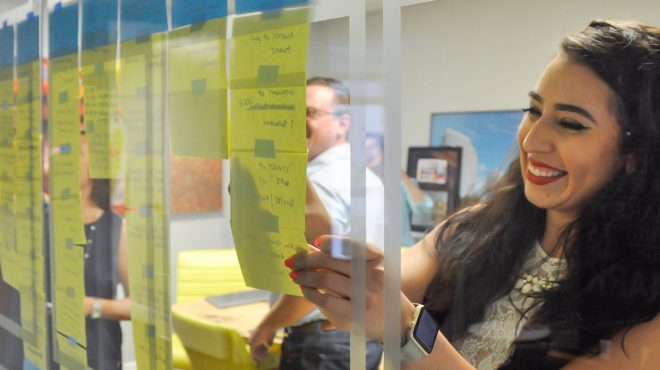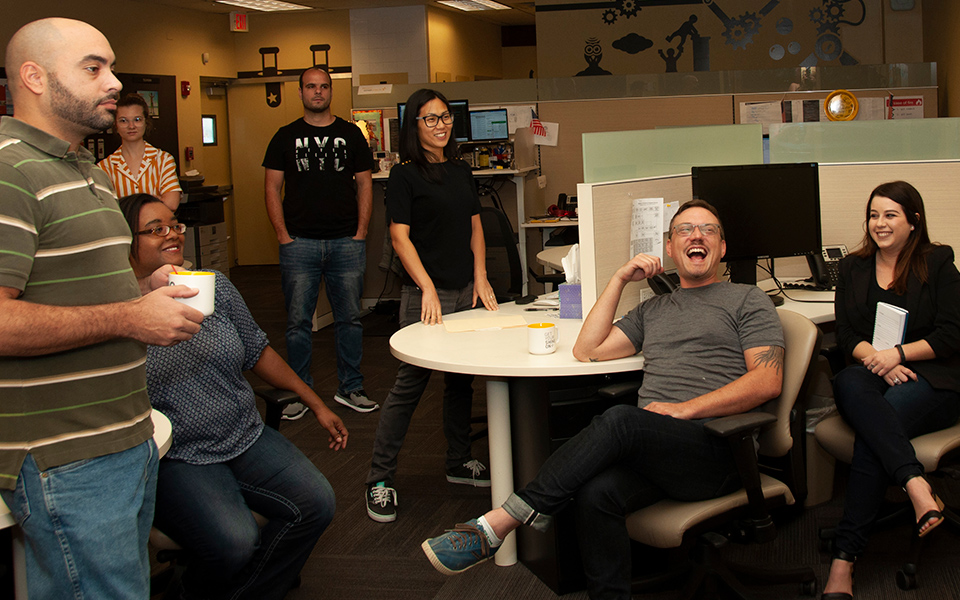Jan 3, 2020
Agile creates a better work-life balance for employees

Agile | SFBJ
Reprinted from South Florida Business Journal
Companies moving to an Agile work environment is a growing trend. Of 3,130 project managers surveyed by the Project Management Institute, 75% say their companies use Agile at least some of the time. Among these are knowledge-based professional organizations, as well as many other categories including software and manufacturing.
There are many benefits for companies using Agile—a work methodology that gives ownership of the work to each individual team member. From planning and defining to producing each work element, the work process is transparent to all. The result is higher productivity and happier, more motivated employees.
Employees want to work smarter
As one ad agency employee put it: “Before Agile, the workday used to be filled with distractions and interruptions. People breathing down your neck or stopping by every 5 minutes. [Agile] setting the expectations lets you focus on the work. Everyone understands better what has to happen for the work to complete.”
Having ownership of the work improves productivity
The first thing that the millennial generation is said to require to be happy in their job is collaboration. Agile is an inversion of the traditional department silo approach. In an Agile environment, multidisciplinary teams complete work together in close collaboration.
In that sense, Agile is all-inclusive of not only those who produce the work,but all of those—from senior management on down—who have an interest in a project’s success.

It’s about collaboration and personal development
Collaboration is closely followed as a millennial job requirement by personal development, both of which Agile promotes among the team. Everyone on the team speaks about their work, not only in planning meetings, but in 15-minute “stand up” meetings every day. Each team member discusses accomplishments, reports a plan for the day and calls out any resources needed to be able to complete that work. Senior management can see project deliverables every two weeks, which result from carefully preplanned work sprints.
This Agile worker pretty much summed it up:
“There’s a personal feeling of accomplishment. You feel good when you’re able to get it done. And, at the end of the sprint, we all feel that. It’s that sense of accomplishment as a group.”
Another employee said: “I would never go back to how I worked at previous companies. With Agile, I’m in command of the promises I make and the work I deliver.”
Agile transformations take resources and time
Unfortunately, you cannot snap your fingers and create an Agile work environment. It requires training and coaching from the top down and a willingness to change how work is produced. Some people who have had bad experiences with Agile were following the processes without adopting the change in mindset. The good news is that this training helps employees understand and adopt ownership of the overall goals for the business. As a result, teams become more united, cohesive and valuable.
You might try Agile first by using consultants or agencies that can facilitate your planning with their teams and yours. You may want to contact your local CareerSource office to apply for training grants to help you fund this effort.
Agile can be a major contributor in recruiting and retaining a happy workforce and, therefore, happy customers. Yes, it takes planning. But in today’s low-unemployment business environment, workforce satisfaction is definitely a competitive advantage.
